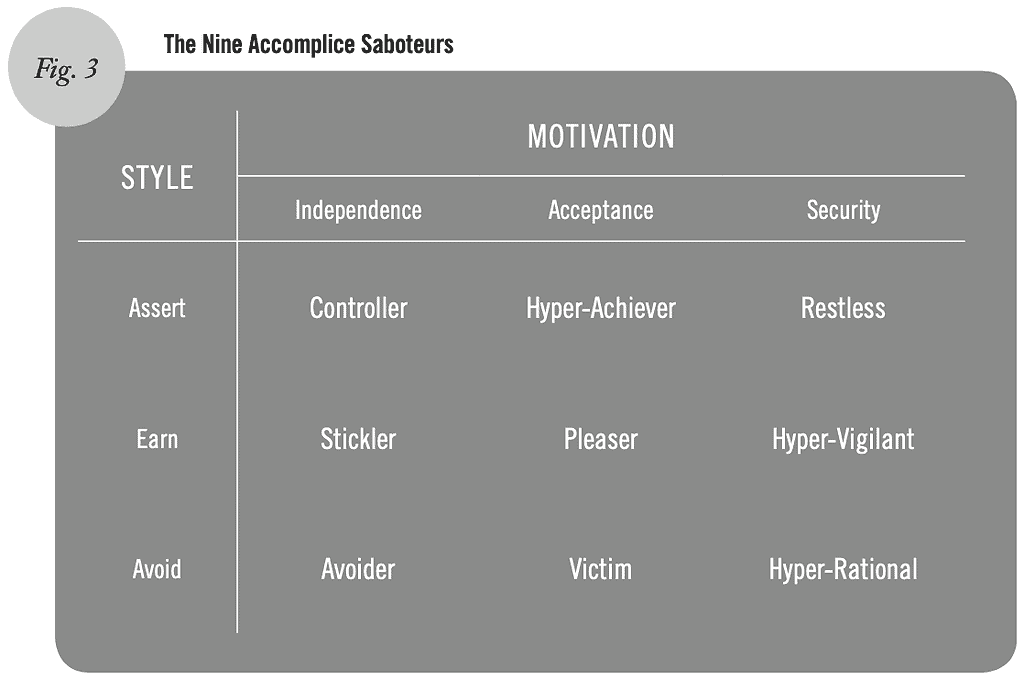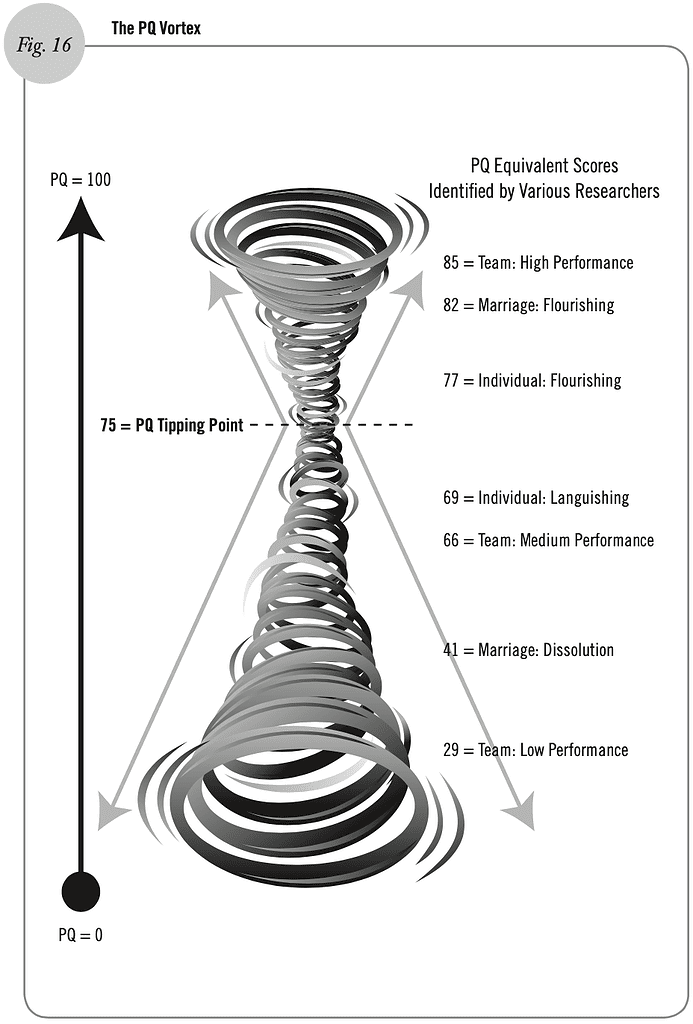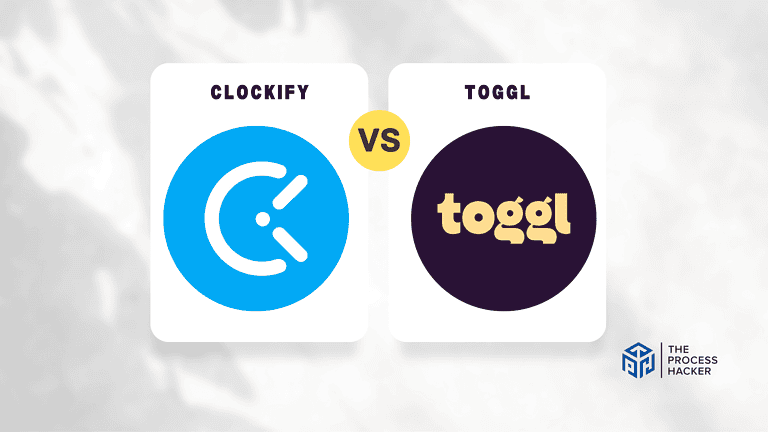Positive Intelligence by Shirzad Chamine | Summary
In Positive Intelligence, Shirzad Chamine helps you improve your PQ to be happier and achieve your true potential in life and work.
In Positive Intelligence, Shirzad Chamine helps you achieve your true potential in life and work by shifting your inner balance of power. He enables you to measure your Positive Intelligence to improve the percentage of time that your mind is serving you rather than sabotaging you.
Buy Positive Intelligence on Amazon

Positive Intelligence by Shirzad Chamine
Why Only 20% of Teams and Individuals Achieve Their True Potential and How You Can Achieve Yours
Download the PDF Book Summary for Positive Intelligence
Part I: What is Positive Intelligence and PQ?
In Part I of Positive Intelligence, Shirzad Chamine provides a general overview of the Positive Intelligence (PQ) framework.
Chapter 1: Positive Intelligence and PQ
In Part I of Positive Intelligence, Shirzad Chamine describes Positive Intelligence and PQ. Your level of Positive Intelligence correlates to the level of your true potential you will achieve:
Positive Intelligence – “an indication of the control you have over your own mind and how well your mind acts in your best interest”
Positive Intelligence measures the relative strength of two modes of your mind. High Positive Intelligence means your mind helps you more than it hurts you, while Low Positive Intelligence indicates the opposite. Positive Intelligence is measured in terms of PQ:
Positive Intelligence Quotient (PQ) – “the percentage of time that your brain is working positively (serving you) versus negatively (sabotaging you)”
Many people believe that you must work hard to succeed and be happy. However, improving your PQ results in greater happiness and performance, leading to greater success. Additionally, increasing your PQ improves your immune system, lowers stress, and helps you live longer.
During his MBA program, Chamine discovered the destructive power of judgment in his mind. This discovery caused him to research the mental mechanisms and found two dynamics:
- Our minds are our own worst enemies for our happiness and success as it shelters Saboteurs, but they can be easily identified and weakened.
- The brain “muscles” that give way to wisdom and insights have stayed weak from the lack of exercise but can be rebuilt to harness our wisdom and mental abilities.
“Your potential is determined by many factors, including your cognitive intelligence (IQ), your emotional intelligence (EQ), and your skills, knowledge, experience, and network. But it is your Positive Intelligence (PQ) that determines what percentage of your vast potential you achieve.”
Inquiry: “If you could significantly improve one important thing, personally or professionally, as a result of reading this book, what would it be?”
Chapter 2: The Three Strategies to Improve Positive Intelligence (PQ)
Research has shown that most people revert to their “baseline happiness” or performance levels shortly after experiencing events that significantly increase these factors. This regressive phenomenon occurs due to mental sabotage from our Saboteurs:
Saboteurs – the internal enemies that “are a set of automatic and habitual mind patterns, each with its own voice, beliefs, and assumptions that work against your best interest”
Saboteurs are universal and habitually developed to fulfill our needs for survival while growing up. When reaching adulthood, the Saboteurs are not necessary but still are harbored in your Survivor Brain. As your Saboteurs represent your internal enemies, your Sage is the opposite:
Sage – “represents the deeper and wiser part of you” that thinks big picture and avoids succumbing to the inconsequential issues of the moment or the lies of the Saboteurs
The Sage views challenges or obstacles as opportunities to succeed by using its incredible powers of the mind. However, many people have not tapped into these powers as they lie in the PQ brain, which is different from that of the Saboteurs.
The book demonstrates the relationship between the Sage and Saboteurs in your mind. Shirzad Chamine provides these three independent strategies to increase your Positive Intelligence:
- Weaken Your Saboteurs: Identify thought and emotion patterns that come from your Saboteurs and gain the clarity that they do not help you.
- Strengthen Your Sage: Shift to the Sage perspective and access the five powers it uses to meet every challenge.
- Strengthen Your PQ Brain Muscles: Learn techniques to build up your PQ Brain muscles as they are underdeveloped while your Survivor Brain has been in overdrive.
Inquiry: “What do you find energizing, hopeful, or exciting about Positive Intelligence? What are you skeptical about? How would you know if your skepticism were generated by a Saboteur trying to stay in power?”
Part II: First Strategy: Weaken Your Saboteurs
In Part II of Positive Intelligence, Shirzad Chamine provides the first of three strategies for increasing PQ: weakening your Saboteurs.
Chapter 3: Self-Assessment of the Ten Saboteurs
The problem with the Saboteurs is that once formed, they remain entrenched in our minds. In Chapter 3 of Positive Intelligence, Shirzad Chamine teaches you about the master Saboteur, the Judge, and the nine accomplice Saboteurs. The Judge is universal in all of us:
Judge – “a predisposition to exaggerating the negative and assuming the worst is actually good for survival” that:
- “Finds faults with self, others, and circumstances;
- Causes much of our disappointment, anger, regret, guilt, shame, and anxiety; and
- Activates accomplice Saboteurs.”
Early in life, the Judge helps us survive and understand our experience, but its interpretation is flawed and negative. Further, the Judge activates at least one accomplice, which is developed from the personality dimensions of your motivations and styles of handling challenges.
Motivation: Three primary motivations underpin our emotional survival needs:
- Independence – a need for boundaries with others and being independent from them
- Acceptance – a need to maintain a positive social image and be accepted by others
- Security – “a need to control life’s anxieties and push away or minimize them”
Styles: Additionally, three different styles satisfy your primary motivational need:
- Assert – the most active, commanding style in which you take action to fulfill your needs
- Earn – the less demanding style in which you work hard to meet your motivational need
- Avoid – the style that withdraws you “from activities, thoughts, feelings, or other people” to fulfill your motivational need
The following table shows how the intersection between your primary motivation and your primary style determines one of the nine accomplice Saboteurs:
Here is a short description of the nine Saboteurs:
- Avoider – “focusing on the positive and pleasant in an extreme way; avoiding difficult and unpleasant tasks and conflicts”
- Controller – has an “anxious need to take charge and control situations and people’s actions to one’s own will; results in anxiety and impatience when that is impossible”
- Hyper-Achiever – “dependent on constant performance and achievement for self-respect and self-validation; highly focused on external success, leading to unsustainable workaholic tendencies and loss of touch with deeper emotional and relationship needs”
- Hyper-Rational – has an “intense and exclusive focus on the rational processing of everything; can be perceived as cold, distant, and intellectually arrogant”
- Hyper-Vigilant – “continuous intense anxiety about all the dangers in life and a strong focus on what could go wrong; can never rest”
- Pleaser – “indirectly tries to gain acceptance and affection by helping, pleasing, or flattering others; loses sight of own needs and becomes resentful as a result”
- Restless – “constantly in search of greater excitement in the next activity or in constant busyness; rarely at peace or content with the current activity”
- Stickler – “perfectionism and a need for order and organization taken too far”
- Victim – “emotional and temperamental style to gain attention and affection; an extreme focus on internal feelings, particularly painful ones; martyr streak”
To learn more about each Saboteur and determine which is strongest within you, Shirzad Chamine recommends that you perform a self-assessment on the Positive Intelligence website. Further, you will learn specific techniques to weaken your accomplice Saboteur.
First, confront your Saboteurs by exposing their lies. Then, you can effectively weaken them by “observing and labeling your Saboteur thoughts or feelings when they show up.” These actions make the Saboteurs apparent and discredit them in your mind.
Inquiry: “A Saboteur initially served a purpose—to protect you physically or help you survive emotionally. How did your Judge and your top accomplice Saboteur help you in your youth?”
Chapter 4: Judge, the Master Saboteur
In Chapter 4 of Positive Intelligence, Shirzad Chamine helps you understand the Judge in greater detail so you can expose and weaken it. The Judge causes us to have negative thoughts and unhappy emotions by finding faults in ourselves, others, and our circumstances.
1) Judging Self: First, the Judge sabotages us through self-judgment and brings out our insecurities. However, dealing with those Judge-induced insecurities depends on the trigger from the specific accomplice Saboteurs. Also, the most destructive lie of the Judge is that believing love is conditional, as we are not worthy of love and respect by being ourselves.
2) Judging Others: Next, the Judge sabotages us by judging others and getting us to negatively focus on the Saboteurs of others. The focus can be self-fulfilling as your Judge can trigger and reinforce the Saboteur in the other person. Despite your Judge not taking responsibility, you are co-responsible for your interactions with other people.
3) Judging Circumstances: Lastly, the Judge sabotages us through the judgment of our life circumstances. Typically, we find them not good enough, which leads to one of the most destructive lies of the Judge: “You will be happy when…” Either you are basing your happiness on a future “when” situation or the target of “when” moves out as you are about to reach it.
As the Judge is a Saboteur, you need to similarly label its thoughts and feelings every time you observe them. Remind yourself that the Judge is damaging in three areas of judging yourself, others, and external circumstances.
Inquiry: “What would change, at work or in your personal life, if your Judge’s voice were significantly weakened?”
Download the PDF Book Summary for Positive Intelligence
Part III: Second Strategy: Strengthen Your Sage
In Part III of Positive Intelligence, Shirzad Chamine discusses the second of three strategies for increasing PQ: Strengthening your Sage.
Chapter 5: The Sage Perspective
In Chapter 5 of Positive Intelligence, Shirzad Chamine teaches the power and wisdom of the Sage perspective and contrasts it with the far more common Judge perspective. The Sage perspective creates peace of mind and helps you take focused action:
Sage Perspective – “accepts what is, rather than denying, rejecting, or resenting what is; accepts every outcome and circumstance as a gift and opportunity”
This perspective opposes that of the Judge, which views outcomes and circumstances as bad and creates reasons to feel helpless. Thus, when our Judge considers something as wrong, we avoid dismissing it but take it with a grain of salt.
The Sage actively transforms seemingly bad situations into something meaningful. When action is needed, the Sage decisively acts on an opportunity without being distracted by Saboteurs. Shirzad Chamine created this Positive Intelligence method for shifting to the Sage perspective:
Three-Gifts Technique: Determine at least three scenarios where your seemingly bad situation could be transformed into a gift or opportunity without worrying about the timeframe.
Our Saboteurs can get you fixated on the loss or problem and discredit the Sage mindset even with extreme issues. However, you cannot control what happens to you in your life. Instead, you can allow your Sage to help you decide how you respond to these events.
Inquiry: “Pick one thing in your life, whether, at work or home, that’s causing you particularly high distress right now. Try the Three-Gifts technique on it: think of at least three ways the problem could turn into a gift and opportunity at some point in the future.”
Chapter 6: The Five Sage Powers
In Chapter 6 of Positive Intelligence, Shirzad Chamine teaches you the five powers of the Sage: Empathize, Explore, Innovate, Navigate, and Activate. With these powers, your Sage helps you overcome all challenges with great results, satisfaction, and happiness.
1) Empathize – feel and show appreciation, compassion, and forgiveness with ourselves and others in any situation
- Needed When: There are strong feelings involved, emotional reserves are running low, or some rechange is needed before problem-solving.
- Power Game – Visualize the Child: Envision yourself or another as a child in a situation where its true essence shows to shift to feeling empathy and care for yourself or others.
2) Explore – experience discovery with curiosity, openness, wonder, and fascination
- Needed When: Trying to further understand an issue or situation to help you better decide to move you forward.
- Power Game – Fascinated Anthropologist: Observe your environment to discover what simply is, without attempting to judge, control, or modify the circumstances.
3) Innovate – “create new perspectives and outside-the-box solutions”
- Needed When: The current or standard way of approaching a solution is not enough, so you need to think outside the box.
- Power Game – Yes, And: Follow every new idea by saying “Yes” to appreciate that idea and then saying “and” to react and add to it.
- For More: Check out The Innovator’s DNA (book summary) to learn the discovery skills.
4) Navigate – deciding a specific path with alternatives that best align with your internal values and mission in life
- When Needed: “Need to find alignment with deeper values, purpose, or meaning.”
- Power Game – Flash Forward: When facing a decision, imagine being at the end of life to view the current choice in a sobering and Saboteur-free perspective.
5) Activate – “moving you into pure action, where all your mental and emotional energies are laser-focused on action and not distracted by the Saboteurs”
- When Needed: There is a clear direction that requires you to take action without procrastination, distraction, or obstructions from Saboteurs.
- Power Game – Preempt the Saboteurs: Envision yourself in your accomplice Saboteur’s shoes to anticipate and intercept how they might try to sabotage your actions.
Inquiry: “What is one area of your work or life where you could use some fresh and creative new perspective? Play the “Yes . . . and . . .” game by writing idea after idea nonstop for ten minutes without any evaluation along the way.”
Part IV: Third Strategy: Build Your Positive Intelligence (PQ) Brain Muscles
In Part IV of Positive Intelligence, Shirzad Chamine provides the third of three strategies for increasing PQ: building your PQ Brain muscles.
Chapter 7: Positive Intelligence (PQ) Brain Fitness Techniques
In Chapter 7 of Positive Intelligence, Shirzad Chamine shows you how to strengthen your PQ Brain muscles. First, he provides the difference between your Survivor Brain and your PQ Brain. The Saboteurs are fueled by the areas of your brain, known as the Survivor Brain:
Survivor Brain – “consists of the most primitive parts of the brain, the brain stem, and the limbic system, both of which are involved in initiating our response to danger”
Since we were children, our Survivor Brains have been in overdrive for most of us. And so many today live to survive and respond with a fight-or-flight to the present stress or anxiety. In contrast, the Sage is fueled by the parts of the brain known as the PQ Brain:
PQ Brain – the areas of the brain, including the middle prefrontal cortex (MPFC), the Empathy Circuitry, and the right brain, that gives the Sage its perspective and its five powers
Even though many have underdeveloped PQ Brain muscles, we can exercise them and develop PQ strength reasonably quickly. For example, one PQ rep is performed by “shifting as much of your attention as you can to your body and any of your five senses for at least ten seconds.”
Every day, Chamine recommends that you do 100 PQ reps daily to remain mentally healthy. In addition, he suggests that you can conduct PQ reps during the following everyday activities: daily routines, physical exercise, eating, listening to music, playing sports, and being with loved ones. Further, Chamine suggests doing PQ reps when a Saboteur appears and gets labeled.
Further, you can accelerate your PQ training by doing a PQ equivalent of a gym workout for about 15 minutes daily or 45 PQ reps. Chamine has developed guided PQ sessions that deeply activate the PQ brain and are found on the PQ website. To unleash the power of habit, you should do at least 100 PQ reps daily for 21 days to build a new PQ habit.
The stronger your PQ Brain muscles get, the better you will be able to handle the significant challenges that occur in life. Chamine recommends several strategies to ensure that you develop a successful practice of PQ training:
- Get an Accountability Partner to support and challenge to get the reps done daily.
- Use All Three Strategies to harness the power of the cumulative effect of them.
- Break Down the Practice into manageable pieces to build one PQ muscle at a time.
- Commit to Six Weeks as 21 days requires near perfection, which is tough to do.
- Prioritize Your Daily Practice to eat that frog daily until it becomes a new habit.
Inquiry: “Are you willing to commit 15 minutes per day to weaken your Saboteurs, strengthen your Sage, and build up your PQ Brain muscles? How might your Saboteurs trick you in the coming days to have you stop your practice?”
Download the PDF Book Summary for Positive Intelligence
Part V: How to Measure Your Progress
In Part V of Positive Intelligence, Shirzad Chamine shows PQ calculation to measure progress.
Chapter 8: PQ Score and PQ Vortex
In Chapter 8 of Positive Intelligence, Shirzad Chamine shows you how to calculate PQ for individuals and teams. Then, you can measure progress and best use the three strategies for increasing PQ for yourself or your team.
Your Positive Intelligence Quotient (PQ) is your Positive Intelligence expressed as a percentage of the time your mind serves you vice sabotaging you. For example, having a PQ of 75 means that your mind serves you 75 percent of the time while sabotaging you the rest of the time.
“Your potential is determined by many factors, including your cognitive intelligence (IQ), emotional intelligence (EQ), skills, knowledge, experience, network, and so forth.” However, PQ strongly predicts how much of one’s or a team’s true potential is achieved with this formula:
Achievement = Potential × PQ
Research shows that the tipping point is a PQ score of 75. Below 75, a net-negative vortex consistently drags down. Conversely, above 75, a net-positive vortex consistently uplifts an individual or team. This figure shows a visual representation of the vortex:
Many people perform way below their potential, as only 20 percent have PQ scores above the critical tipping point. Nevertheless, you can tune into the powerful energy and information contained in the PQ vortex with the PQ Channel:
PQ Channel – “the channel through which energy, emotions, and tone are communicated” to positively impact your ability to interact with others
Inquiry: “Pick an important relationship. If you counted the interactions in which positive or negative energy is exchanged between you and the other person, would the ratio typically be at least three positives to one negative?”
Part VI: Applications
In Part VI of Positive Intelligence, Shirzad Chamine provides many applications of the three PQ strategies to improve your personal and professional life.
Chapter 9: Work and Life Application
In Chapter 9 of Positive Intelligence, Shirzad Chamine shows the great diversity and range of these applications, including the following:
- Team-Building: Implement a PQ report built into weekly team discussions to ensure that the team focuses on improving PQ over time into the net-positive vortex.
- Work-life Balance: Improve your work-life balance by being in your PQ Brain while spending quality time on what is important to you.
- Parenting: Teach your children about their own Sage and Saboteurs and develop their PQ by coaching them through their daily challenges.
- Improving Your Game: Get into the “zone” by doing as many PQ reps as possible right before and during your game.
- Solving Complex Problems: Do a 15-minute PQ gym routine to fully activate your PQ Brain before attempting a complicated question or finding a creative answer.
- Finding Meaning and Purpose: (1) Ensure you have activated your PQ brain when you change how you work; or (2) Change what you do within your current job, offers, or roles.
- Working/Living with Tough People: (1) Stop fueling their Saboteurs; (2) Fuel their Sages; (3) Help them discover their Saboteurs; or (4) Put boundaries on their Saboteurs.
- Health and Dieting: Transform your relationship with food with at least ten PQ reps with every meal, which causes you to eat slower and enjoy the meal more.
- Managing Stress: As all stress is created by Saboteurs, work to strengthen and activate your PQ Brain to find peace amid the most challenging situations.
- Developing Other People: Start with PQ training for your team if you want to make long-lasting permanent improvements to your people.
For help organizing your application, you can create your to-do lists in an app such as Todoist or ClickUp.
Inquiry: “What is one area in which you feel most inspired to use the PQ approach? What would success in this area look and feel like?”
Chapter 10-12: Case Studies: Leading Self and Team
In these chapters of Positive Intelligence, Shirzad Chamine provides stories about the following:
- Chapter 10: A corporate leader transforms his failing company by improving PQ.
- Chapter 11: A couple turns their issues into opportunities to improve the relationship.
- Chapter 12: A sales team applies PQ principles to improve their sales.
Download the PDF Book Summary for Positive Intelligence
Next Steps: Get Down to Mental Fitness
In Positive Intelligence, Shirzad Chamine helps you improve your PQ as the most effective and sustainable path to being happier and achieving your potential. You have already increased your PQ by reading this book, but you can continue improving it through practice. Finally, you should check out the book here.
Mental fitness is just as important as physical fitness for a healthy lifestyle! That’s why my friend Jeni, a certified Mental Fitness coach, is here to help you boost your positive intelligence (PQ). In a world full of stress and negativity, it’s essential to focus on your mental fitness.

Jeni has the expertise to guide you on your journey to better mental well-being and productivity, and I highly recommend her services. Don’t let negative thoughts and emotions hold you back from living your best life. Take action now and reach out to Jeni for more help on improving your mental fitness (PQ) and achieving your goals!









